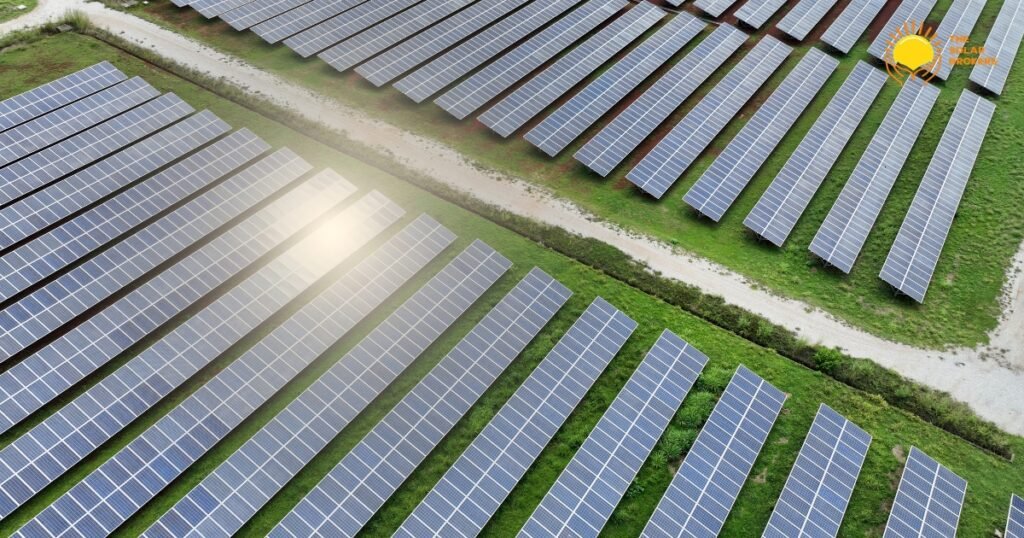
Maryland is moving leaps and bounds when it comes to renewable energy, particularly the power of the sun. The state provides a host of incentives that help homeowners and businesses install solar panels. In 2025, and now more than ever, it is highly relevant to make use of these programs. And in the process, property owners can save money on energy costs and help promote a cleaner environment. These incentives are enabling homeowners to switch to commercial solar in Maryland and enjoy savings while saving our planet. Now is the ideal time to start applying them for a greener future.
How to Utilize Maryland’s 2025 Solar Incentives
In 2025, Maryland will have solar incentives available to help businesses and homeowners combat rising installation costs while increasing their move to clean energy. Programs like the Commercial Solar Grant, Maryland Solar Access Program, and local tax credits can help you save money and invest in sustainability. Here are the details:
1. Commercial Solar Grant Program (FY26)
The FY26 Commercial Solar Grant Program will open in September 2025 from the Maryland Energy Administration (MEA). This program provides grants to businesses, nonprofits, and other organizations to install solar panels. It gives preference to projects that serve low-to-moderate income areas or underserved communities. Qualified applicants may receive financial aid to offset the cost of installation, making solar energy more affordable and accessible. This is a program to make going solar and saving money easier for businesses.
2. Maryland Solar Access Program (MSAP)
The Maryland Solar Access Program (MSAP) awards grants to qualified Maryland residents for the installation of solar panels. This program assists income-qualified households by lowering the cost of solar energy. To apply, you first reserve funding and then confirm installation is complete. The goal of MSAP is to provide low- and moderate-income households with access to solar energy so they can save on their electric bill.
3. Clean Energy Rebate Program (C-CERP)
The Clean Energy Rebate Program (C-CERP) had previously funded the installation of clean energy systems for businesses, nonprofits, and local governments. But, beginning in Fiscal Year 2025, the program office has terminated the C-CERP and will not resurrect it. Instead, interested parties need to apply for the new FY26 Commercial Solar Grant Program that replaces the solar component of the C-CERP. This new program provides the same benefits and helps organizations move to clean energy.
4. Maryland Income Tax Credit for Energy Storage Systems
The Maryland Energy Storage Income Tax Credit helps households and businesses install energy storage systems. But this program was discontinued in 2024 and is no longer accepting applications. The MEA has a new residential and commercial energy storage program that will start this summer, 2025. The new initiative will also install energy storage systems to support grid reliability and energy resilience.
5. Local Property Tax Incentives
Maryland counties also provide property tax conditions to promote the use of solar energy. For instance, Baltimore County offers tax credits for facilities or homes with solar panels. Commercial properties can for 3 to 5 years receive a cut totaling 10% to 80% in county property taxes, depending on the level of energy efficiency at the property. These local enticements can drive down the cost of solar panel installation.
Federal Investment Tax Credit (ITC)
Businesses may also benefit in one of two ways, seeing compensation for solar: Federal Investment Tax Credit (ITC). The ITC allows businesses to receive a percentage of the cost they spent on installing solar back as a credit toward federal taxes. The ITC remains at 30% in 2025, providing significant savings on commercial solar projects. But the ITC will be phased out after 2025, meaning businesses must take advantage of solar now. When you want to go solar Maryland, there is no better time than now, where you may benefit from the ITC and save on costs.
Net Metering and SREC (Solar Renewable Energy Credit) Information
Under Maryland’s net metering policy, solar owners get credits for the excess electricity they return to the grid. These credits drive down electricity bills, resulting in continual savings. Additionally, they may opt to participate in the Solar Renewable Energy Credit (SREC) program. Businesses, meanwhile, can generate additional revenue rather than simply consuming energy by selling SRECs to utilities, which are able to help fulfill their renewable energy portfolios. That allows solar owners to potentially make money from their systems.
End Note
Maryland has some really strong solar incentives for 2025, so this is a great year to get started on your investment in clean, renewable energy. Programs such as commercial solar in Maryland Access Program are helping to lower costs. These are win-win incentives for both sustainability and saving. Now is the optimal moment to profit from these opportunities for long-term advantage.
Get started today to maximize your 2025 solar savings.
